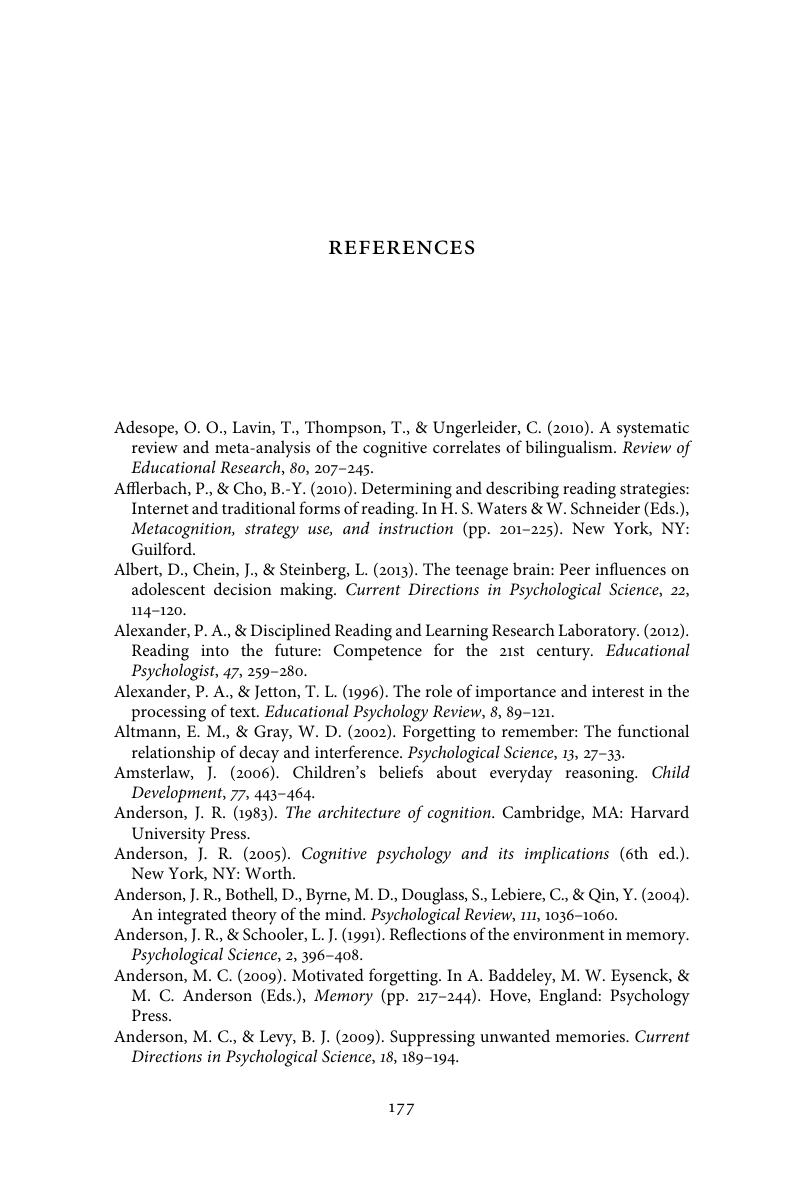Book contents
- How We Think and LearnTheoretical Perspectives and Practical Implications
- How We Think and Learn
- Copyright page
- Contents
- Acknowledgments
- 1 The General Nature of Human Cognition and Learning: Probably Not Quite What You Think It Is
- 2 The Human Brain: The Hardware of Our Thinking and Learning
- 3 Cognition and Learning as Constructive Processes: Finding Order in Chaos
- 4 Key Components of the Human Memory System: An Overly Simplistic Yet Useful Model
- 5 In-Depth Cognitive Processing: Maximizing the “Long-Term” in Long-Term Memory
- 6 Remembering, Forgetting, and Misremembering: Why Long-Term Memory Isn’t Always Dependable
- 7 Metacognition: Thinking about Thinking
- 8 Conceptual Change: Revising Our Understandings When Revisions Are Called For
- 9 Bringing Other Factors into the Picture: How Emotions, Dispositions, and Attributions Affect Thinking and Learning
- 10 Self-Regulating Our Behavior: Turning Intentions into Actions
- Book part
- References
- Index
- References
References
Published online by Cambridge University Press: 02 March 2017
- How We Think and LearnTheoretical Perspectives and Practical Implications
- How We Think and Learn
- Copyright page
- Contents
- Acknowledgments
- 1 The General Nature of Human Cognition and Learning: Probably Not Quite What You Think It Is
- 2 The Human Brain: The Hardware of Our Thinking and Learning
- 3 Cognition and Learning as Constructive Processes: Finding Order in Chaos
- 4 Key Components of the Human Memory System: An Overly Simplistic Yet Useful Model
- 5 In-Depth Cognitive Processing: Maximizing the “Long-Term” in Long-Term Memory
- 6 Remembering, Forgetting, and Misremembering: Why Long-Term Memory Isn’t Always Dependable
- 7 Metacognition: Thinking about Thinking
- 8 Conceptual Change: Revising Our Understandings When Revisions Are Called For
- 9 Bringing Other Factors into the Picture: How Emotions, Dispositions, and Attributions Affect Thinking and Learning
- 10 Self-Regulating Our Behavior: Turning Intentions into Actions
- Book part
- References
- Index
- References
Summary

- Type
- Chapter
- Information
- How We Think and LearnTheoretical Perspectives and Practical Implications, pp. 177 - 222Publisher: Cambridge University PressPrint publication year: 2017



